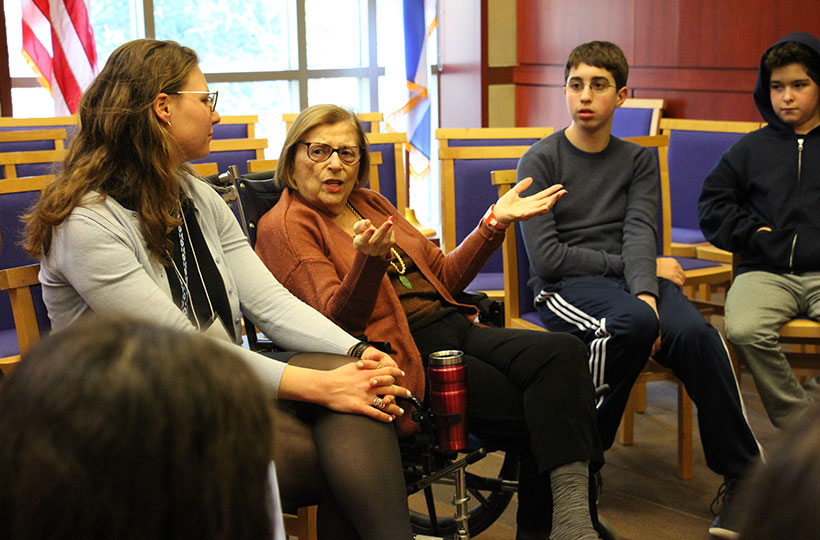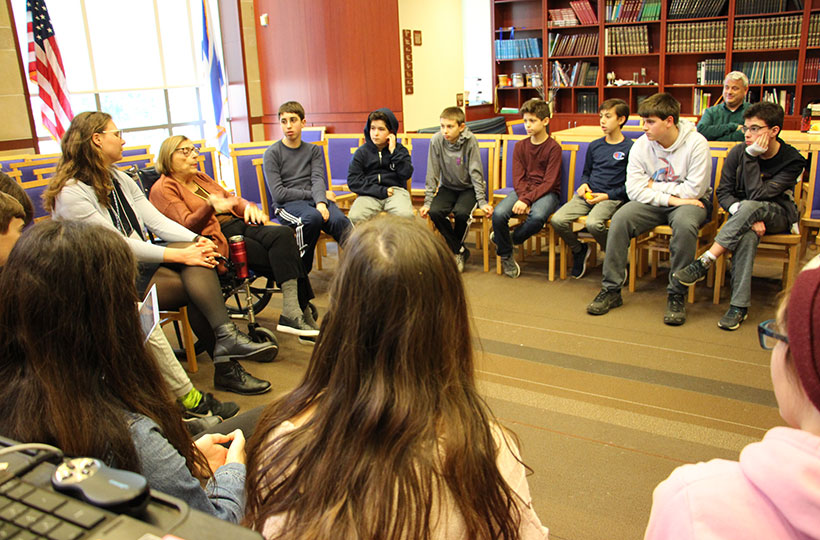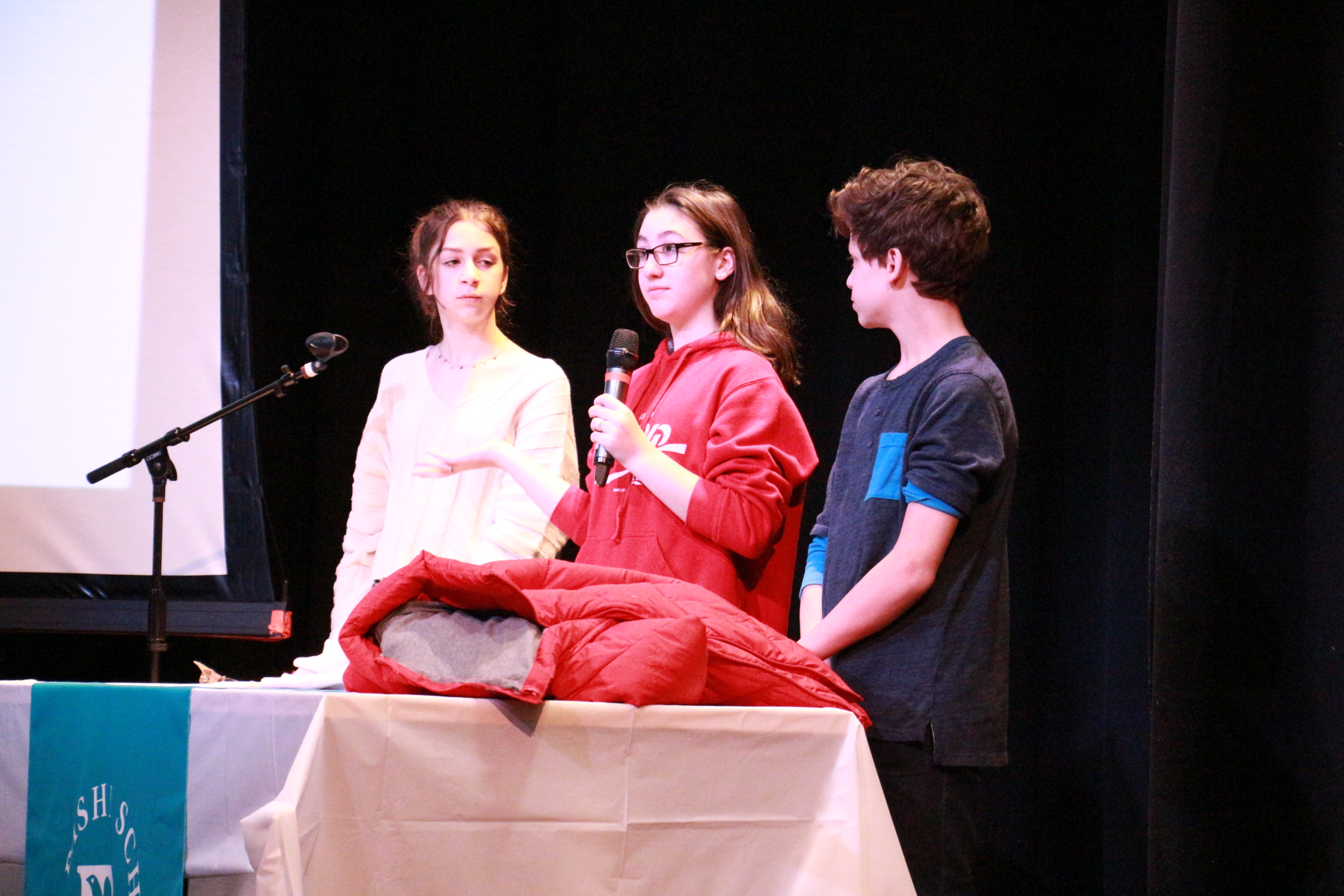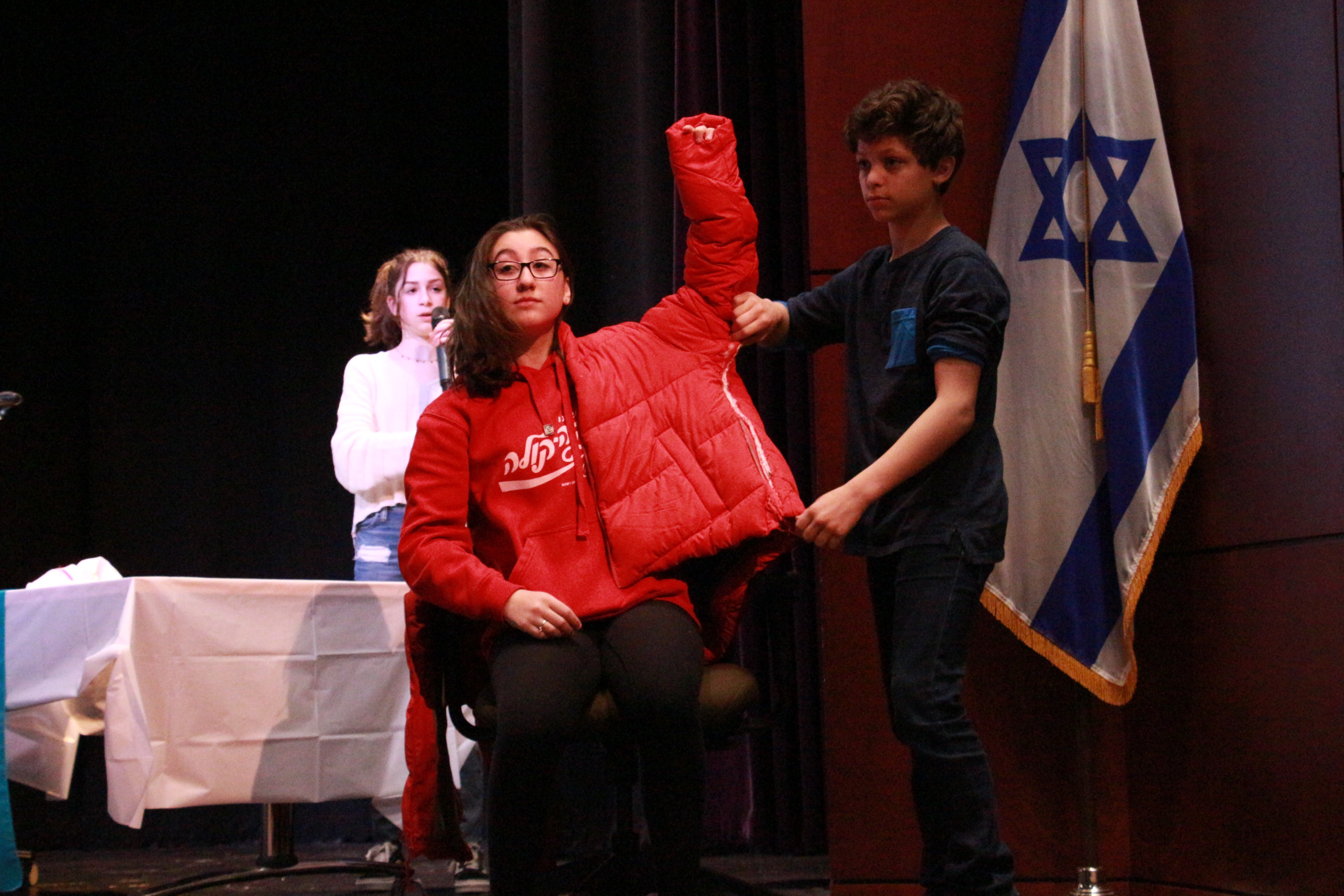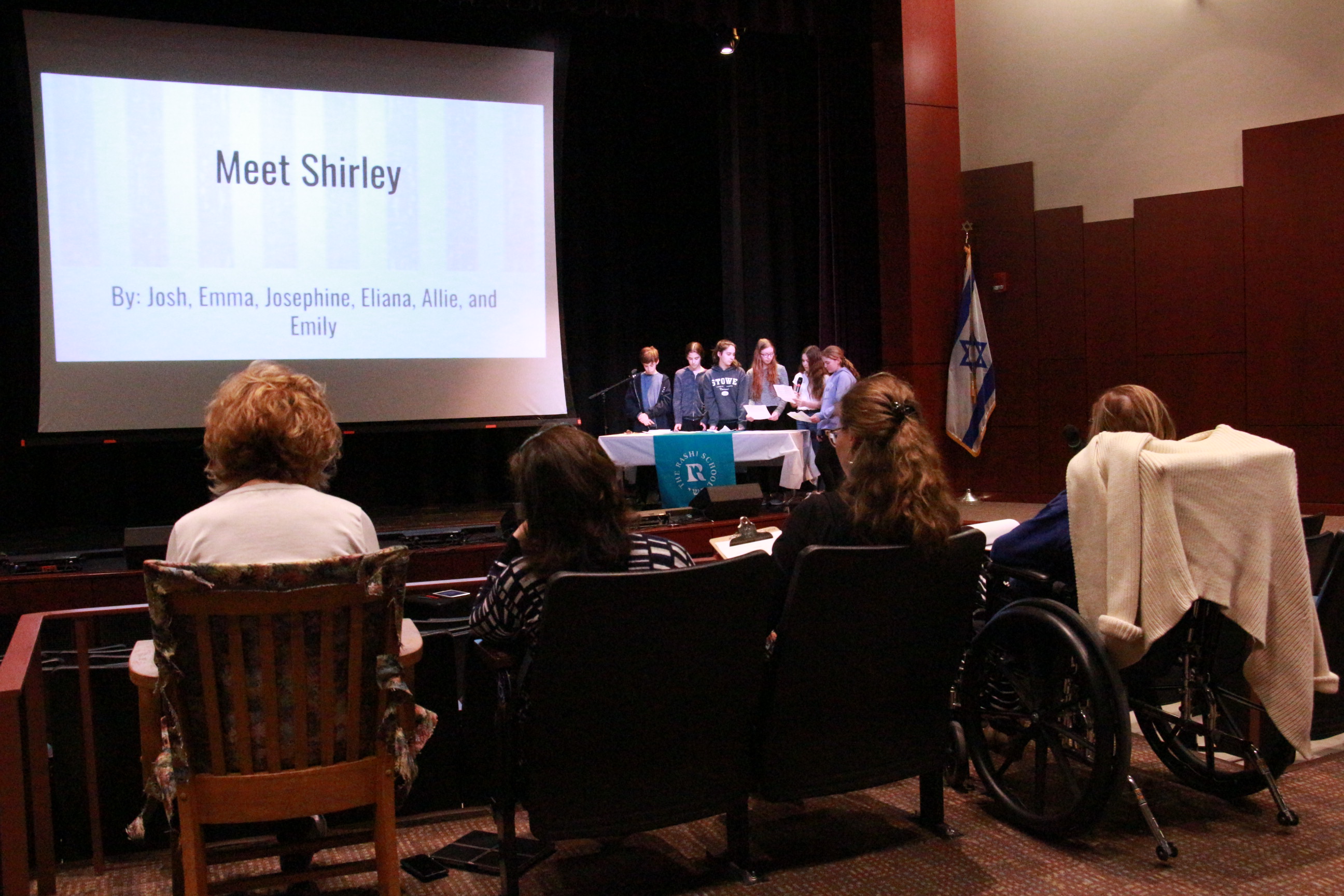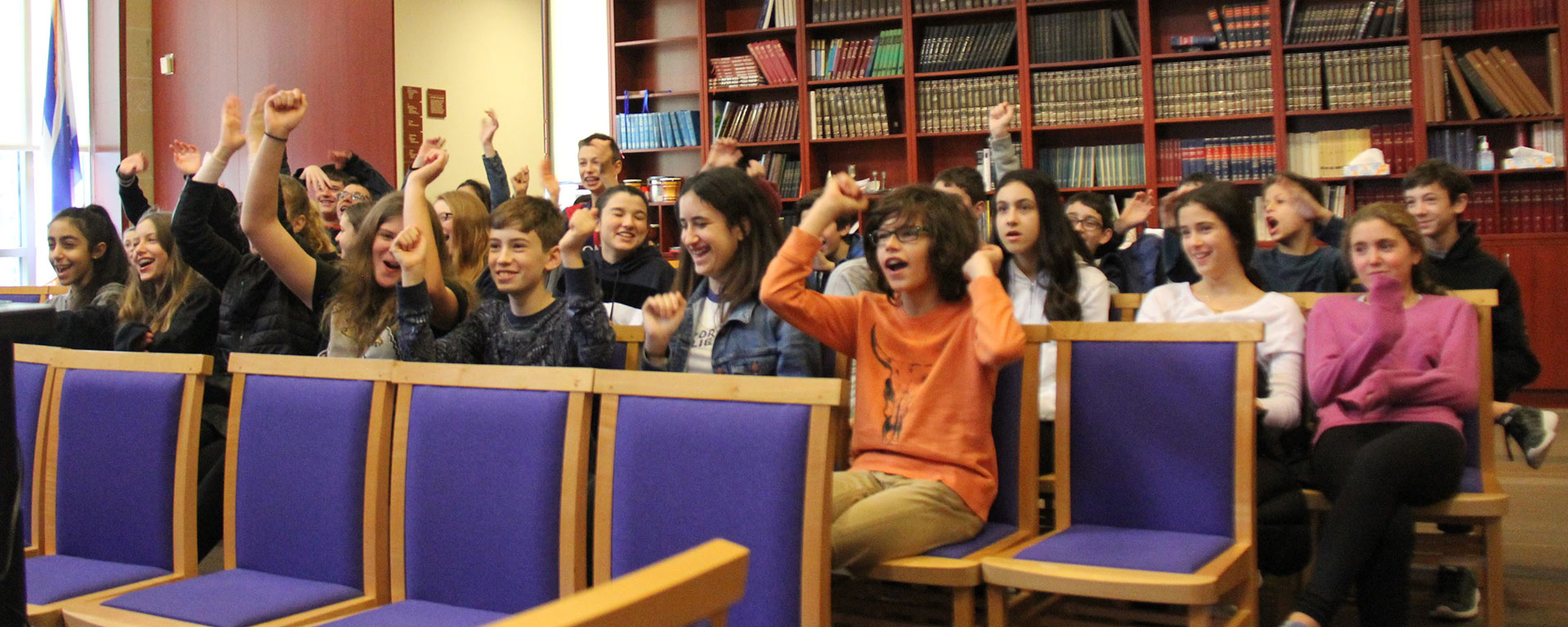
This year, the seventh-grade class took on a long-term design thinking challenge brought to Rashi by Gateways Ambassadors for Inclusion. This project was first proposed about a year ago. Jewish day schools from all over the greater Boston area each worked with a client to define their need(s) and design something that would make a challenge in their life easier. In each school, the project was approached differently based on the school’s culture, the students’ background, and the client.
Design thinking is a people-centered approach to innovation. There are a few main components of the design thinking process — empathy, research, idea generation, and using a prototype to test an idea. There is a customer or client who presents the problem and can give valuable feedback. The client can be a person, a community, an animal threatened by extinction, or any individual entity affected by a problem of focus.
In December, we kicked off the project around Chanukah with a conference call with all of the other schools involved. We sang and lit candles together, and our leaders at Gateways spoke more about the project. Then, our students had the opportunity to hear from Shirley Scott, a resident at NewBridge who, due to surgical complications, needs assistance with everyday things including getting into her wheelchair. They engaged with her with empathy, working to truly understand who she is now, who she was before her spinal injury, and what she wanted from them. The seventh-grade class broke into 6 collaborative groups for approaching the project, and in their groups, they began to work.
The students engaged with the design thinking process in an authentic way: they brainstormed ideas, defined Shirley’s challenges, problem solved how they could help with her challenges, created prototypes, and worked toward their final products. Products ranged from social media websites to physical aids.
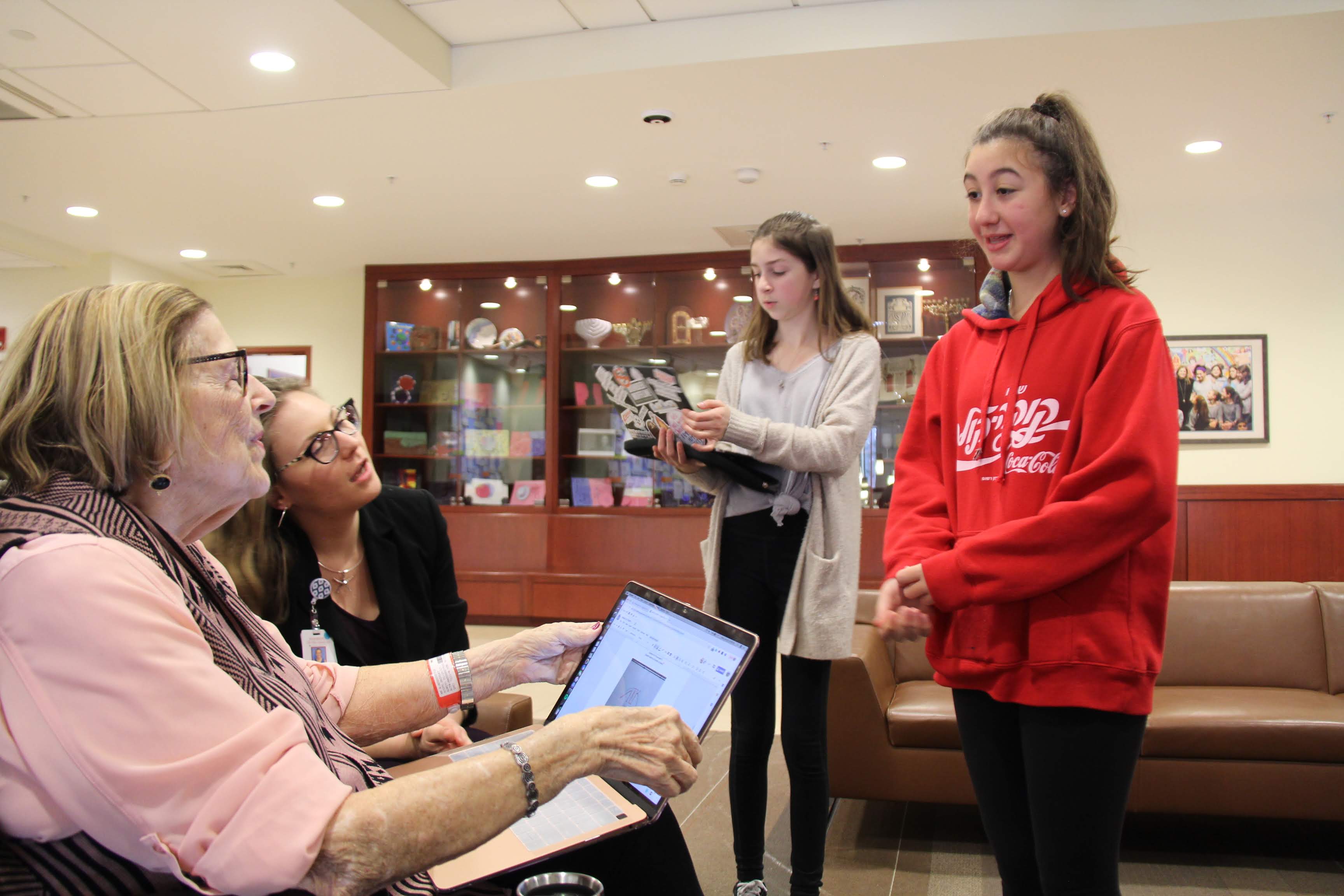
Gaby, a seventh-grader who enjoys trail hiking during fitness and health class, recalls her team’s work process: “My group ended up trying to solve the problem of Shirley’s lack of social interaction by creating an app for her to connect with other NewBridge residents. The design thinking process is structured so that we all brainstorm and then get feedback after building a rough prototype. Getting feedback from Shirley was useful because we found how much she interacted with others, and could then work on new ways for her to connect with other people. Our biggest challenge was finding an original way to show a working app, but we ended up creating a program on the coding website, scratch.”
Another student, Jesse, a math enthusiast, recalls the work his group did to solve an issue that Shirley found with her cooking classes at NewBridge. “We tried to solve this problem by brainstorming ideas to make the class more interactive and discussing those ideas with NewBridge staff. Our project is still a work in progress, but we are still working with NewBridge to find a way to improve the cooking classes. Throughout this process, I have not only learned problem-solving but I’ve learned to push myself outside of my comfort zone by partnering and enjoying working with new friends.”
Near the end of the process, each group presented their solutions to a panel of judges from the NewBridge staff and Shirley, herself. The group chosen to represent Rashi at the final gathering designed, created an itemized budget, and then manufactured a jacket with zip-up sleeves that allowed Shirley and others like her to dress more independently.
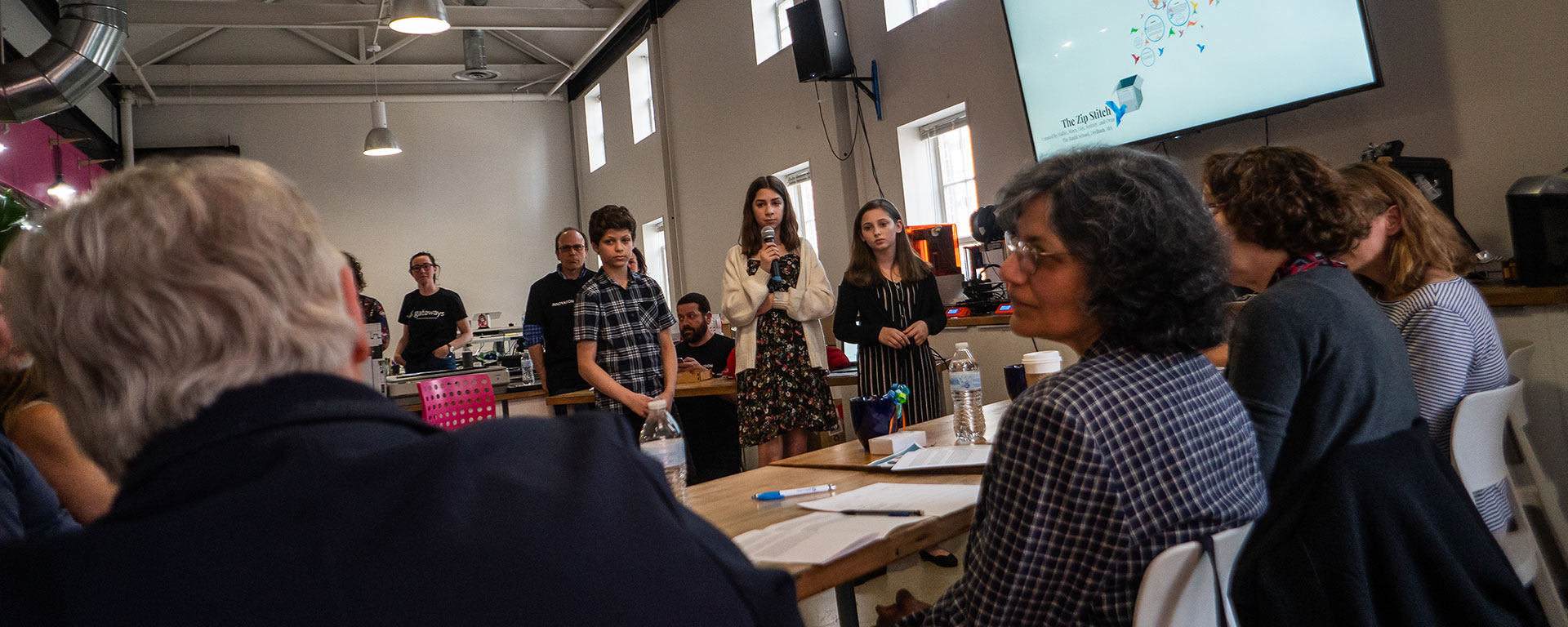
This group presented their innovation at NuVu Innovation School in Cambridge and competed with other Jewish day schools’ student-led designs. “Our design makes it easier for Shirley to get her jacket on while seated in a wheelchair,” explains Hallie G., who was part of the group who presented at NuVu. “Our biggest challenge was the zippers. No matter what we did, they were sticky and wouldn’t budge, but we ended up cutting some extra fabric off of the jacket and taping back some thread.”
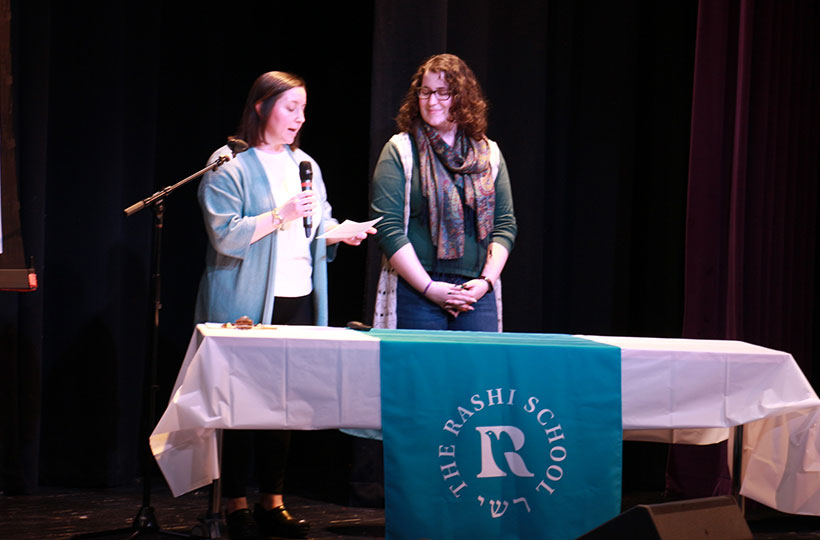
Charged with the task of enhancing our Design Thinking curriculum, Middle School Science Teacher Deb Berlin and Middle School Assistant Teacher Michelle Katz attended the Critical Making Camp for Educators at EXPLO (The Exploration Center) last summer. The program was a week-long professional development program for anyone looking to challenge the traditional approaches to education and focus on creativity, design thinking, and the critical making mindset. “I was amazed by the empathy, critical thinking, and ingenuity of these seventh-grade students,” said Michelle Katz. “I know that our seventh-graders’ education at Rashi that focused on fostering critical minds and compassionate hearts took no small part in leading them to their ideas.”
The Rashi School is grateful to CJP, The Ruderman Family Foundation, and Gateways for making this learning opportunity possible for our students.


